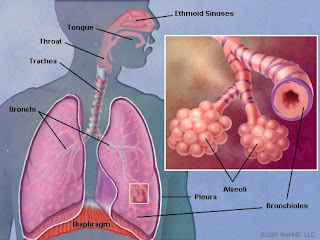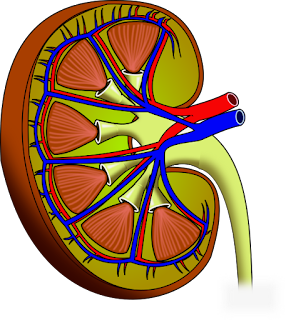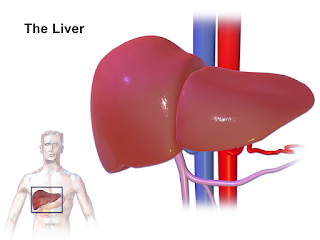FUNCTIONS OF KIDNEY
Hi Friends!!!
In our previous anatomy and physiology session we have discussed about Lung Anatomy, Function and Disease, Anatomy of Kidney. Please check out for the link below.
Lung Anatomy, Function and Disease
Being a healthcare professional, it is very important to have knowledge about human body.
Today we are going to discuss about functions of kidney.
Kidney is one of the important organ in our human body. It it very much helpful in excreting waste from our body.
Let’s get into the topic.
FUNCTIONS OF KIDNEY
The kidneys are relatively small organ which receives 20 to 25 percentage of heart’s output. Blood enters the kidney through renal arteries and leaves through renal veins. One of the main functions of kidney is maintaining homeostasis. Kidney maintains electrolyte balance, fluid levels and other factors that keep the internal functions of the body consistent.
Kidneys regulate electrolyte concentration and amount of fluid within the body by filtering electrolytes and water from blood, returning some to blood and excreting excess in the urine. Hormones help in regulating fluid and electrolyte balance are antidiuretic hormone, aldosterone, atrial natriuretic peptide. Kidney helps maintain acid base balance by excreting hydrogen ions into urine and reabsorbing bicarbonate from urine.
EXCRETION OF WASTE
One of the primary functions of kidney is to make urine and purify blood. Kidney removes waste materials and other chemicals which are not needed by the body. The following are the major compounds removed by the kidney.
1. Urea, resulting from the breakdown of proteins.
2. Uric acid, resulting from the breakdown of nucleic acids.
REGULATING BLOOD PRESSURE
Kidneys helps regulate blood pressure. During high blood pressure, kidney makes more urine, so that the volume of blood that fills the arteries and veins decrease and it lowers the blood pressure. During low BP, kidney makes less urine, so that the volume of blood that fills the arteries and veins increases and it increases blood pressure.
MAINTAIN BONES HEALTHY
Kidneys convert the vitamin D into its active form which is important to absorb calcium from food, growth of bones and teeth. During kidney failure, there will be a decrease in levels of active vitamin D which leads to decrease in growth of bones.
REABSORPTION OF NUTRIENTS
Kidney reabsorbs nutrients from the body and transports them to where they are needed. Substance reabsorbed by kidney is
1. Glucose.
2. Amino acids.
3. Bicarbonate.
4. Sodium.
5. Water.
6. Phosphate.
7. Chloride.
8. Magnesium.
9. Potassium ions.
The difference in sodium levels can affect the persons mental health. The difference in potassium levels can affect the functioning of heart and muscles.
FUNCTIONS OF KIDNEY
RELEASE OF COMPOUNDS
ERYTHROPOIETIN
Kidneys produce a hormone called erythropoietin. Erythropoietin is released into blood by the kidneys in response to hypoxemia (low oxygen levels). These erythropoietin promotes the formation of red blood cells by the bone marrow. And after certain amount of time they are excreted in urine. During kidney failure, production of erythropoietin is decreased which in turn leads to the decreased production of RBC resulting in low haemoglobin.
CALCITRIOL
Calcitriol is an active form of Vitamin -D which is produced by the kidney and it promotes strong and healthy life.
RENIN
Kidneys produce renin which regulates body’s water balance and blood pressure level. Kidneys produce renin in following three conditions.
1. When there is a fall in blood pressure which is sensitized by baroreceptors in the arterial vessels.
2. When there is decrease in salt i.e., sodium chloride which is detected in the kidney by the macula densa in the juxtaglomerular apparatus.
3. When sympathetic nervous system activity is detected through beta 1 adrenergic receptors.
GLOMERULAR FILTRATION RATE (GFR)
The primary function of the glomerular filtration rate (GFR) is to measure the kidneys ability to filter waste and excess fluid from blood. This function of kidney measured by glomerular filtration rate (GFR) is a important for maintaining overall health of the body. The glomerular filtration rate (GFR) estimates the amount of blood passing through the glomeruli each minute. The glomeruli is a filter in kidney used to filter waste and excess fluid from blood.
Now I hope you have acquired some knowledge about functions of kidney. We will discuss in detail about a topic related to Biomedical Engineering in our future blogs.
NOTE: Dear friends!!!… Please do comment a topic related to Biomedical, so that we
can discuss it in future blogs.
Check out for this blog about Computed Tomography, X ray, MRI scan, ECG.
COMPUTED TOMOGRAPHY|TECHNOLOGY|ARTIFACTS
x ray machine working principle
DON’T FORGET TO FOLLOW THIS BLOG PAGE
DROP YOUR MAIL ID TO GET IMMEDIATE UPDATES
If you find this blog post knowledgeable, comment & share it with a friend!




